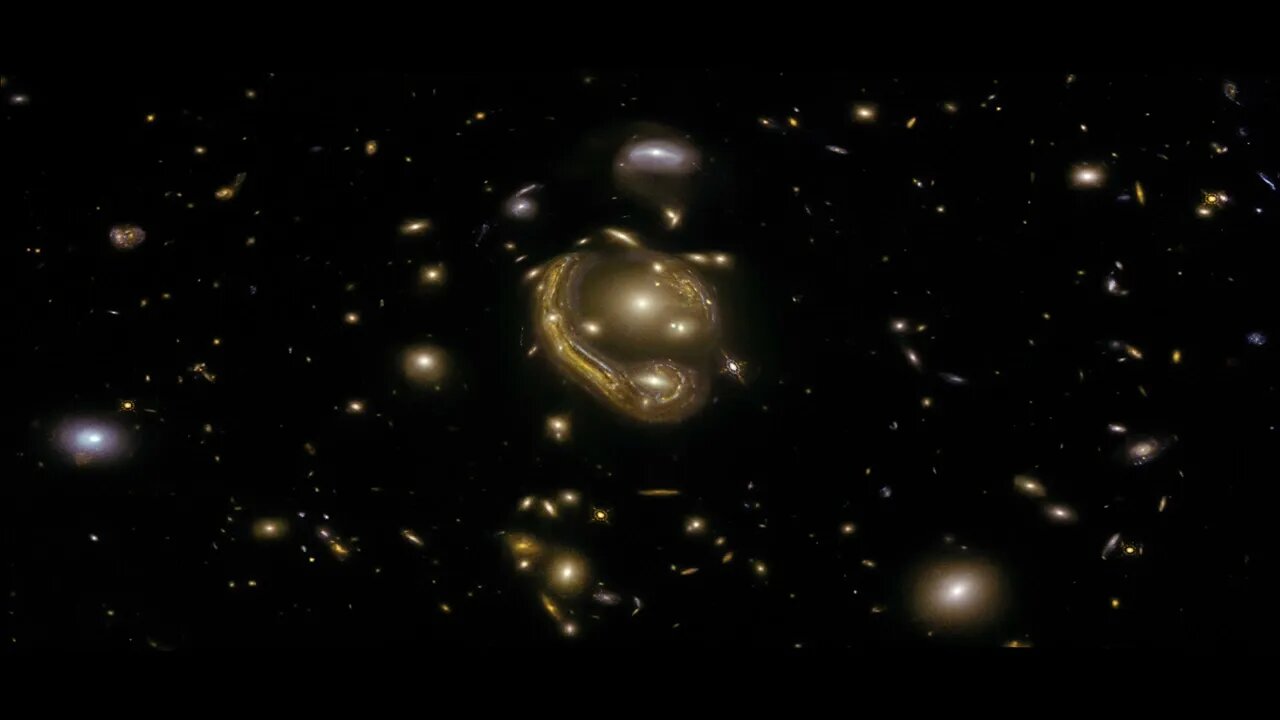Premium Only Content

Understanding Gravitational Lensing and the Einstein Ring Phenomenon #short
In December 2020, the ESA/Hubble team published a breathtaking image of GAL-CLUS-022058s, located in the constellation of Fornax. This image shows one of the largest and most complete Einstein rings ever discovered, created by the process of gravitational lensing. This phenomenon is where light shining from far away is bent and pulled by the gravity of an object between its source and the observer. In this case, the light from the background galaxy has been distorted into an almost perfect ring by the gravity of the galaxy cluster sitting in front of it.
A team of European astronomers used a multi-wavelength dataset, which includes inputs from the Hubble Space Telescope, to study this Einstein ring in detail. The team used a lensing model, derived from the Hubble imaging, to calculate the amplification factor, which allowed them to study the intrinsic physical properties of the lensed galaxy. They determined the galaxy’s magnification factor to be 20, which effectively makes the Hubble Space Telescope’s observing capability equivalent to that of a 48-metre telescope. This finding is larger than the currently planned extremely large telescopes.
Styx AI is developing innovative techniques based on quantum mechanics, depth maps, generative imaging, machine learning, and new mathematics to move the "looking glass" of complex nonuniform spacetime. Their process can break down an image into nearly infinite pieces, providing greater depth and detail to reveal previously unseen information.
Credit: ESA/Hubble & NASA, S. Jha
Acknowledgement: L. Shatz
Processed by STYX AI
#hubblespacetelescope #space #nasa #GravitationalLensing #astronomy #styxai #quantummechanics #machinelearning #galaxy
-
 55:37
55:37
Candace Show Podcast
5 hours agoMatt Gaetz Out, Jussie Smollett Walks Free! | Candace Ep 108
100K260 -
 54:43
54:43
LFA TV
23 hours agoTrump Has Learned His Lesson | Trumpet Daily 11.21.24 7PM EST
12.2K4 -
 DVR
DVR
theDaily302
12 hours agoThe Daily 302-Special Border Invasion Shutdown Show
7.84K -
 4:29:05
4:29:05
Tate Speech by Andrew Tate
12 hours agoEMERGENCY MEETING EPISODE 92 - IN THE TRENCHES
748K1.1K -
 1:01:23
1:01:23
In The Litter Box w/ Jewels & Catturd
1 day agoThe Trump Effect | In the Litter Box w/ Jewels & Catturd – Ep. 696 – 11/21/2024
81.4K33 -
 20:53
20:53
SLS - Street League Skateboarding
2 days agoGold Medals, World Class Food, Night life & more - Get Lost: Tokyo
75.9K7 -
 47:13
47:13
PMG
21 hours ago $1.26 earned"Hannah Faulkner and Doug Billings | WHY LIBERALS LOST THE ELECTION"
41.9K1 -
 59:01
59:01
The Liberty Lobbyist
7 hours ago"We Only Have NOW To Make a Difference"
42K2 -
 4:16:41
4:16:41
CatboyKami
8 hours agoStalker 2 Blind playthrough pt1
40.9K2 -
 1:06:27
1:06:27
Russell Brand
8 hours agoNeil Oliver on the Rise of Independent Media, Cultural Awakening & Fighting Centralized Power –SF498
214K287